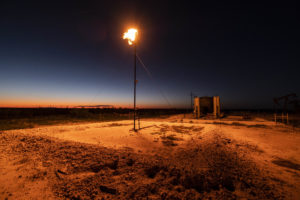I’m writing on a day when SeaTac had a high temperature ten degrees hotter than the previous record.

Summer — our brief respite of full, sunny days and clear-crystal weather for which we endure our nigh-year purgatory of ever-drizzle and afternoon sunsets — had still not officially arrived at the time this review was written.
We can hope this season will squeeze in some few nice days precious amid the ash-gray haze of Pacific Northwest forest fires that turns the high-sky sun into a cigarette’s cherry. We’re told this is the new normal, but it could be worse. And it will be.
“It is, I promise, worse than you think.”
The New York Magazine piece “The Uninhabitable Earth” by American journalist David Wallace-Wells from 2017 goes on:
If your anxiety about global warming is dominated by fears of sea-level rise, you are barely scratching the surface of what terrors are possible, even within the lifetime of a teenager today.
Wallace-Wells details what heating the whole world by degrees really means, the sort of catastrophe a rise of four degrees Celsius causes everywhere and how ten degrees makes vast portions utterly unlivable from the direct heat — let alone crop failure, flooding, and extreme events that will become common enough just to be called “weather”.
The UN Intergovernmental Panel on Climate Change (IPCC) determined in its Fifth Assessment Report that:
limiting global warming to 1.5°C would require “rapid and far-reaching” transitions in land, energy, industry, buildings, transport, and cities. Global net human-caused emissions of carbon dioxide (CO2) would need to fall by about 45 percent from 2010 levels by 2030, reaching ‘net zero’ around 2050.
This means that any remaining emissions would need to be balanced by removing CO2 from the air.
Global energy consumption continues to grow, and though renewable sources are growing quickly by percentage, they represent little overall.
In BP’s Statistical Review of World Energy 2018 (pdf), they determined:
Oil remains the world’s dominant fuel, making up just over a third of all energy consumed. In 2017 oil’s market share declined slightly, following two years of growth. Coal’s market share fell to 27.6%, the lowest level since 2004. Natural gas accounted for a record 23.4% of global primary energy consumption, while renewable power hit a new high of 3.6%.
“The mass extinction we are now living through has only just begun; so much more dying is coming,” Wallace-Wells writes.
American poet Roy Scranton in 2013 wrote “Learning How to Die in the Anthropocene”, to the purpose of getting people ready for that:
The biggest problem we face is a philosophical one: understanding that this civilization is already dead. The sooner we confront this problem, and the sooner we realize there’s nothing we can do to save ourselves, the sooner we can get down to the hard work of adapting, with mortal humility, to our new reality.
But Scranton is an optimist. He thinks we’re all going to die. I think that is rosy. I think billionaires are working very hard to ensure they can get off the planet or into New Zealand bunkers quickly. I think the people most responsible for the extinction of charismatic life and recognizable human culture have a fair chance at succeeding in their attempt to survive it and tell their descendants that our deaths were a sacrifice that was necessary.
“Anthropomorphic mass extinction was good, actually.”
Anatomically modern humans may not be able to survive a future 7 or 10 degrees hotter, but who says future humans will be anatomically modern? The first people to have access to CRISPR, and the first to have access to every further refinement of it, will be the very wealthiest. I don’t think rational self-interest will motivate those driving the climate catastrophe to stop and save any of the rest of us.
Scranton says we need to take deep breaths and prepare to die. I think that’s putting on the oxygen masks for the impending crash while the drunk pilots parachute out to safety.
“If you think climate change is a serious problem, we have bad news: it’s worse than you think.”
So, that’s the start, proper, to A Bright Future by professor Joshua S. Goldstein and Swedish engineer Staffan A. Qvist.
They largely agree in premise with those articles, but Goldstein and Qvist argue the single most important thing we could do to mitigate and give us a chance at averting climate catastrophe is to first make nuclear power our replacement for all fossil fuel around the world as it relates to electricity generation, then utilize sustainable/renewable/clean technology to wean ourselves off nuclear after.
Subtitled “How Some Countries Have Solved Climate Change and the Rest Can Follow”, their book is an explicit rebuttal to the horseshoe nihilism of the furthest tips on the left and the right. On the left, this nihilism tends to be exemplified by a sort of totalizing, numbing depression.
Why have children and bring a new life in a world like this? Why quit drinking? Why stop smoking cigarettes? Why go on? It’s paralyzing.
On the right, of course, it’s even darker.
When the coming climate catastrophe is admitted at all, the remedy is to say, “Well, the planet is already ruined. The important thing now is to mitigate the effects.”
And for them, that means planning how to round up (and, ultimately, to exterminate) the refugees who’ll be fleeing countries more affected than our own.
One of the push factors in Central America right now seems to be how global warming is affecting agricultural yields there. So we’re already in the middle of it, already on that path, and we have to get started making our total emissions better rather than just less-worse, as is the current goal.
In the book, the authors first sneak their case for nuclear energy in by comparing Germany’s reliance on burning coal to Sweden’s investiture in kärnkraft, which is framed as a proven cost-effective energy source that can produce electricity steadily, day and night, gale or breezeless.
Sweden gets about 40 percent of its electricity from this source.
[K]ärnkraft provides one-fifth of all the electricity in the United States, and two-thirds of its “clean” carbon-free electricity. Like, in Sweden, nobody has died… almost no carbon has been emitted, and hundreds of thousands of lives have been saved compared with burning coal…
But it comes from nuclear energy, so it’s icky, and we’d rather try anything else or at least claim we’re willing to.
Look: I, too, watched the “Chernobyl” miniseries. Radiation poisoning is scary.
But so is black lung, and that killed between 19,000 and 35,600 people as recently as 2013.
Coal kills the miners doing the work immediately and from long-term exposure; it kills others from exposure to particulates in their lungs; and it’s killing the environment we and most of humanity have adapted to ever-so-gradually by rapidly releasing CO2 credited to our planet during the Carboniferous Period, when nothing had yet evolved to eat the trees pulling carbon out of the atmosphere.
In West Texas, they just flare off enough natural gas to power every home in the state, burning it to no purpose except to add to the ambient air pollution that kills a few million people globally each year.

Even if you’re worried about ruining water sources, well, hydraulic fracturing is pretty good at that, and we’re doing a hell of a lot of fracking to get at and squeeze out previously uneconomic oil deposits right now. I quoted British Petroleum up above: it would be nice if the Deepwater Horizon spill in the Gulf of Mexico had resulted in anywhere near the skittishness toward continued oil production that the next year’s Fukushima Daiichi disaster in Japan had toward nuclear energy production.
For those on the right willing to acknowledge anthropomorphic global warming at all, the plan seems to be to avoid Actual Machine technology and kick the can down the road in the hopes some Fanciful Magic technology actually pans out, like blocking out more of the sun in the upper atmosphere, without creating worse problems, like blocking out too much of the sun in the upper atmosphere.
It’s certainly true, though, that environmentalism is susceptible to the same sort of FM prejudices as other areas influenced by technology (that is, all of them).
Goldstein’s and Qvist’s book perhaps places too much blame on Greenpeace and other environmental groups for being responsible for the current climate catastrophe and continued CO2 emissions. With the narrow exception of the United States Green Party’s electoral strategies in 2000 and 2016, I don’t think it’s fair to ascribe that level of potency to the environmental movement, particularly in comparison to the coal, oil, and methane industries.
If Greenpeace were capable of getting anything the fossil fuel industry didn’t already want them to have, the world would look very different indeed.
So it’s not that solar or wind energy don’t have a place in the future but that they aren’t a panacea to the present and have serious, intrinsic shortcomings.
Wind and solar can’t produce electricity consistently or in response to demand, and we don’t yet have the battery capacity to take advantage of their “too much” to store when we have “not enough”.
Qvist and Goldstein also point out that, again, as Actual Machines, there are actual environmental trade-offs involved in producing, maintaining, and decommissioning wind turbines and solar panels. Those don’t make them net negatives, but it does mean they have to be evaluated as cost-benefit rather than only benefit. Part of nuclear energy’s relative costliness and unattractiveness is that negatives like waste and security are already priced in.
The analogy the authors make between the coming global climatic horrors and an approaching asteroid is good enough to be worth adding to the progressive lexicon. That is how earth-shattering what’s up ahead will be.
To extend the analogy further than intended, suppose we could calculate where the asteroid would strike, exactly: Would that be a reasonable justification for those of us in other places to ignore it?
Would it be reasonable and economical to plan how to turn away and otherwise deal with the refugees that might try to flee their impending deaths?
Would it be reasonable to dither over possible environmental damage our launches into space might one day cause?
(If the analogy were closer to true, of course, then Anglo-American Empires would have been the ones to fling the asteroid into space in the first place.)
At present, we have a technology that is good enough to provide the vast majority of our power grid’s energy.
If we continue to shift to electric and hybrid vehicles, the effect on our emissions can be even greater because it would impact transportation.
But that still leaves the fifty-one percent of energy, globally, used in cooling and — more critically — heating.
So, in my view (NPI doesn’t support constructing new nuclear power infrastructure), we need to use nuclear energy every place we currently can and build more to make sure our capacity to non-fossil fuel energy is higher.
Our planet isn’t dying, but some small number of folks are killing the charismatic megafauna on it at an alarming rate. Humans are fairly charismatic.
I’d like to see us survive. (And kittens and dolphins and corvids, too.)

